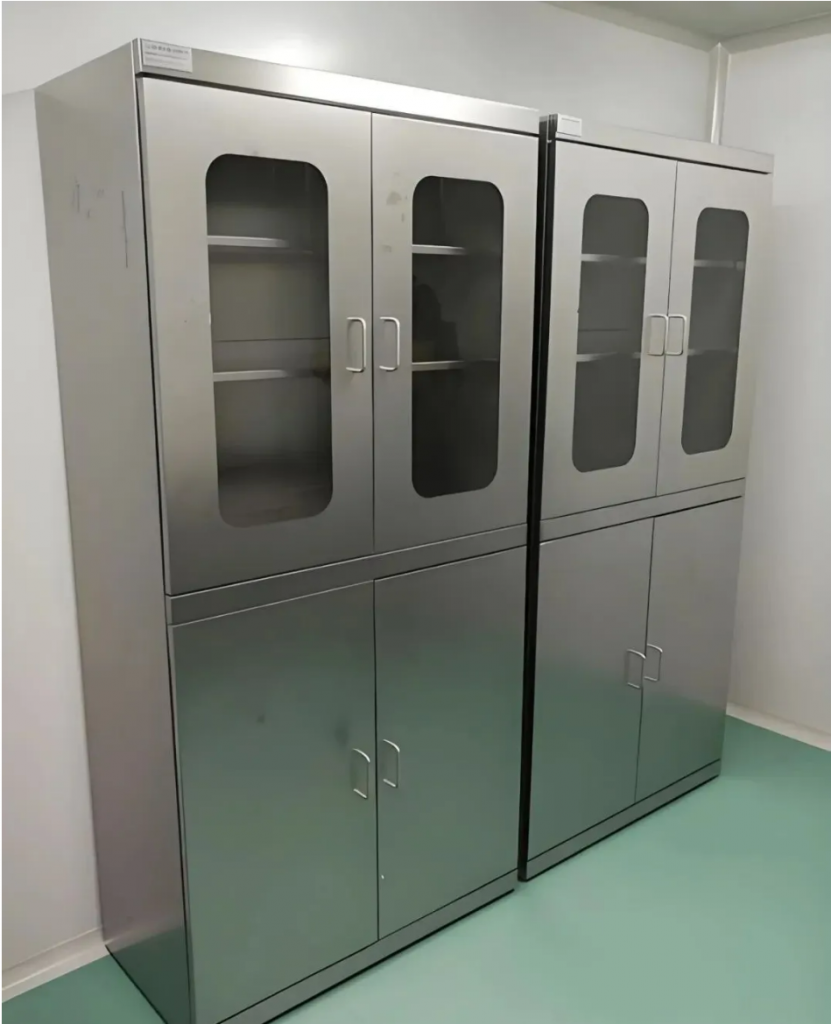The stainless steel medicine cabinets and utensil cabinets used in the laboratory are storage devices specially designed for the laboratory environment. This type of cabinet is made of stainless steel and has many outstanding characteristics, such as excellent corrosion resistance, which can effectively resist various possible corrosion situations; At the same time, it is also easy to clean, making it convenient for users to clean and organize it at any time; In addition, it also exhibits aesthetic appeal and can be adapted to the overall laboratory environment.

1、 Characteristics
Laboratory stainless steel drug cabinet:
In terms of design, emphasis is placed on the safe storage and convenient access of drugs. Generally, a closed design concept is used, which can effectively avoid drug volatilization and prevent cross contamination between different drugs.
Cabinet doors come in a variety of designs, including single door, double door, and sliding door. Users can make corresponding choices based on the actual spatial layout of the laboratory and their specific needs.
According to the characteristics of the drugs themselves, the internal structure has been carefully optimized, such as setting up multiple layers of partitions, drawers, etc. This makes it easier to classify and store drugs, making drug management more orderly.
Laboratory stainless steel container cabinet:
In terms of design, the focus is on the stability and convenience of container storage, and a closed design is also adopted to provide good protection for the container from various external factors.
The spatial layout inside the cabinet is relatively scientific and reasonable, equipped with adjustable partitions or shelves. No matter what size or shape of the container, it can find a suitable storage location by adjusting the partitions or shelves to meet the storage needs of different containers.
Some container cabinets are also equipped with specialized water collection trays or liquid buckets, which are used to collect liquids that may drip from the containers, ensuring that the cabinet is always in a clean and tidy state, reducing inconvenience and pollution caused by liquid dripping.
2、Material and Material Thickness
texture of material:
When making laboratory stainless steel medicine cabinets and utensil cabinets, stainless steel materials are mainly used, among which 304 stainless steel is more commonly used. Of course, there are also higher grade stainless steel materials used. These stainless steel materials have excellent corrosion resistance and oxidation resistance, which can adapt well to complex laboratory environmental conditions, maintain good performance for a long time, and provide reliable guarantee for the storage of drugs and containers.
Material thickness:
The cabinet covers the top plate, bottom plate, side plate, and back plate, and the thickness of its material is generally within the range of 1.0mm to 1.5mm, ensuring the durability and load-bearing capacity of the cabinet.
The material thickness of door panels and plywood also has corresponding considerations, and they may be adjusted appropriately according to specific usage needs. However, under normal circumstances, their thickness is generally not less than 1.0mm. This can ensure stability and safety during use.
3、 Characteristics and advantages
characteristic:
Strong corrosion resistance: The stainless steel material used has excellent corrosion resistance, and can demonstrate good resistance to corrosion in the face of common acidic, alkaline, or other chemical substances.
Easy to clean: Its surface presents a smooth and flat state, making it difficult for dust and other impurities to adhere and accumulate on it. Daily cleaning work is relatively easy and convenient to carry out, making it easy to clean and disinfect.
Beautiful and durable: Stainless steel material has a beautiful and elegant appearance, and is durable, which can enhance the overall image of the laboratory.
Advantages:
High safety: With its enclosed design, it can effectively block drug evaporation and cross contamination between different drugs and containers, ensuring the safety of the laboratory environment.
Strong load-bearing capacity: Thanks to high-quality stainless steel material and scientifically reasonable structural design, the cabinet has strong load-bearing capacity and can store a large amount of drugs and containers.
Wide applicability: These types of drug cabinets and container cabinets have strong flexibility and can be customized according to the specific needs and spatial layout of the laboratory to meet different storage requirements.

